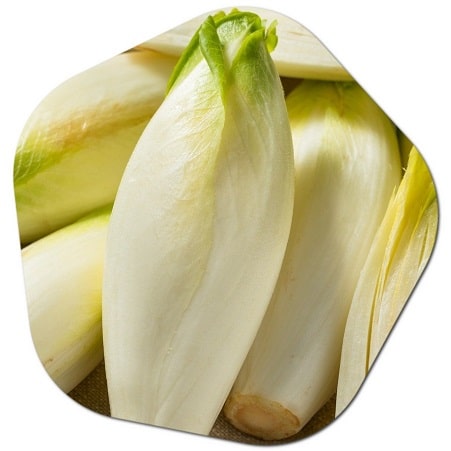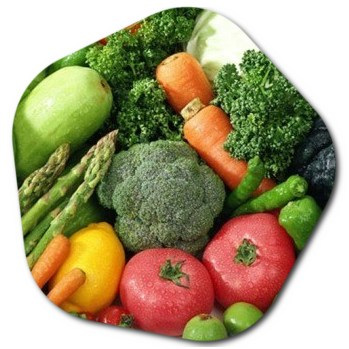Belgium does not have an officially designated national vegetable. However, there are several vegetables that are commonly associated with Belgian cuisine and are frequently used in traditional dishes. These vegetables include:
- Belgian Endive (Chicory): Belgian endive is a leafy vegetable that is known for its slightly bitter taste. It is often used in salads, as a side dish, or cooked as part of various recipes. Belgian endive is a specialty vegetable that is closely associated with Belgian cuisine.
- Brussels Sprouts: Brussels sprouts are small, cabbage-like vegetables that grow in small clusters on the stem. They are a common sight on Belgian dinner tables, particularly during the winter season. Brussels sprouts are often steamed, roasted, or sautéed and served as a side dish.
- White Asparagus: White asparagus is highly popular in Belgium, especially during the spring season. It is grown in the dark to prevent the development of chlorophyll, resulting in its distinctive pale color. White asparagus is a delicacy in Belgian cuisine and is often served with hollandaise sauce or in various traditional dishes.
- Leeks: Leeks are a staple vegetable in Belgian cooking. They have a mild onion-like flavor and are commonly used as a base for soups, stews, and other dishes. Leeks are particularly prominent in the traditional Belgian dish called “Waterzooi,” which is a creamy chicken or fish stew.

While these vegetables are closely associated with Belgium, it’s important to note that Belgian cuisine incorporates a wide variety of vegetables from different regions and cuisines.
Which vegetables grow on Belgian soil?
Belgium has a diverse agricultural sector and cultivates a wide range of vegetables. The country’s fertile soil and favorable climate support the growth of various vegetables. Here are some common vegetables that grow on Belgian soil:

- Potatoes: Potatoes are a staple crop in Belgium and are grown extensively throughout the country. Belgium is known for its high-quality potatoes, which are used in a variety of dishes such as fries (Belgian fries), mashed potatoes, and stews.
- Carrots: Carrots are widely grown in Belgium and are available in different varieties. They are used in soups, stews, salads, and as a side dish.
- Cabbages: Cabbage varieties such as green cabbage, red cabbage, and savoy cabbage are cultivated in Belgium. Cabbages are used in traditional dishes like stamppot, coleslaw, and sauerkraut.
- Onions: Onions are grown throughout Belgium and are a fundamental ingredient in many dishes. They are used as a base for soups, stews, sauces, and various other recipes.
- Beans: Different types of beans, including green beans and broad beans, are grown in Belgium. Green beans are often used as a side dish, in stir-fries, or as part of traditional Belgian dishes like “stoemp” (mashed potatoes and vegetables).
- Tomatoes: Belgium cultivates tomatoes in greenhouses, especially during the cooler seasons. Belgian tomatoes are known for their quality, and they are used in salads, sauces, and other culinary preparations.
- Peppers: Peppers, both bell peppers and chili peppers, are grown in Belgium. They are used in various dishes, from salads and stir-fries to stuffed peppers and sauces.
- Spinach: Spinach is cultivated in Belgium and is commonly used in salads, soups, and as a cooked vegetable.
These are just a few examples of the vegetables that are grown in Belgium. The country’s agricultural industry supports the production of a wide variety of vegetables, providing a fresh and diverse range of options for culinary use. Belgium’s vegetables >>
Which vegetables can I plant in my garden in Belgium?
Belgium’s climate is suitable for growing a wide range of vegetables in home gardens. The specific vegetables you can plant in your garden in Belgium will depend on factors such as your location within the country, the local climate, and the available space and sunlight in your garden. However, here are some common vegetables that are generally well-suited for planting in Belgian gardens:
Lettuce and Salad Greens: Lettuce varieties, such as butterhead, romaine, and loose-leaf lettuce, can be grown throughout the growing season. Additionally, other salad greens like spinach, arugula, and kale are popular choices for home gardens.
Tomatoes: While tomatoes can be grown in greenhouses in Belgium, you can also plant them outdoors during the warmer months. Choose varieties that are suitable for outdoor cultivation and provide support for the plants as they grow.
Beans: Green beans and bush beans can be easily grown in Belgian gardens. They are relatively low-maintenance and can provide a bountiful harvest.
Carrots: Carrots are root vegetables that thrive in Belgian gardens. They can be planted directly in the ground and require loose, well-drained soil.
Zucchini and Summer Squash: These warm-season vegetables grow well in Belgian gardens, producing abundant harvests. They require ample space due to their spreading nature.
Cucumbers: Cucumbers can be grown in both outdoor gardens and greenhouses in Belgium. They prefer warm temperatures and need support for climbing.
Peas: Peas, both shelling peas and sugar snap peas, can be planted early in the season. They enjoy cooler temperatures and should be trellised for support.
Peppers: Bell peppers and chili peppers can be successfully grown in Belgian gardens. They require warm conditions and a longer growing season, so starting seeds indoors may be necessary.
Herbs: Various herbs, such as basil, parsley, cilantro, rosemary, and thyme, can be grown in Belgian gardens. They are often suitable for containers as well.
Remember to consider your specific garden conditions and the recommended planting times for each vegetable. It can be helpful to consult local gardening resources, garden centers, or experienced gardeners in your area for more tailored advice based on your specific location in Belgium.
Which vegetables are planted in which month in Belgium?
Planting times for vegetables in Belgium can vary depending on the specific region within the country and the prevailing weather conditions. However, here is a general guideline for when to plant common vegetables in different months in Belgium:
March:
- Peas: Peas can be planted as soon as the soil is workable in early spring.
- Radishes: Radishes can be sown directly in the garden in early spring.
April:
- Carrots: Carrots can be planted starting in April, once the soil has warmed up a bit.
- Lettuce and Salad Greens: Lettuce and salad greens can be sown outdoors in April.
- Beets: Beets can be planted in April.
- Spinach: Spinach can be sown directly in the garden in April.
- Cabbage Family (Cabbage, Broccoli, Cauliflower): Transplants for cabbage family crops can be started indoors in April for later planting in the garden.
May:
- Tomatoes: Tomato transplants can be planted outdoors after the last frost, which is usually in May.
- Cucumbers: Cucumber seeds or transplants can be planted in May.
- Zucchini and Summer Squash: Seeds or transplants for zucchini and summer squash can be planted in May.
June:
- Beans: Green beans and bush beans can be planted in June.
- Peppers: Pepper transplants can be planted in June.
- Corn: Corn can be planted in June when the soil is sufficiently warm.
It’s important to note that these are general guidelines, and the planting times may vary depending on the specific vegetable variety, microclimates, and local weather conditions. It’s always beneficial to consult local gardening resources, experienced gardeners, or agricultural extension offices for more precise and region-specific planting recommendations. What types of vegetables grow best in Belgium? >>
